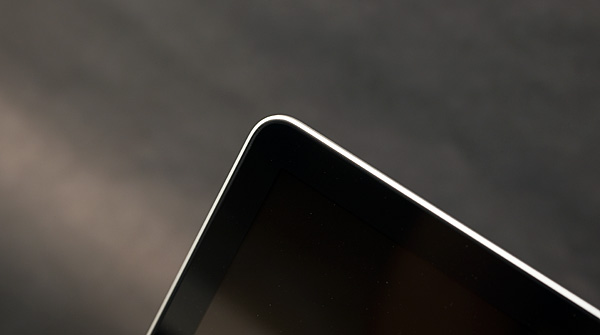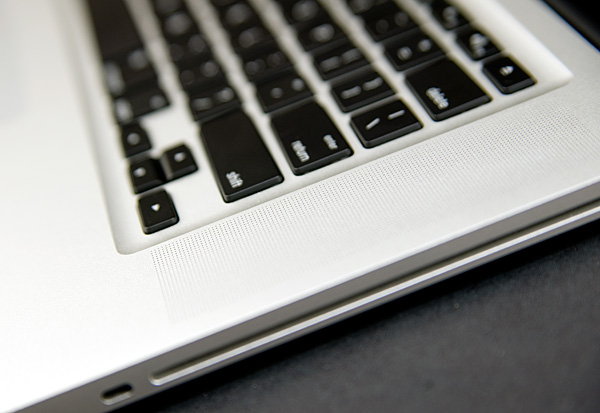Apple's 15-inch Core i5 MacBook Pro: The One to Get?
by Anand Lal Shimpi on April 14, 2010 10:38 PM EST- Posted in
- Mac
- MacBook Pro
- Arrandale
- Core i5
- Laptops
Final Words
Last year's unibody MacBook Pro update didn't do much for performance, but it did wonders for battery life. The huge increase in battery capacity meant Apple's entire pro line of notebooks could be used on cross-country flights or even during a long day of meetings without needing a recharge.
If you needed a Mac laptop at the end of last year, the 2nd gen unibody MacBook Pro was great simply because of its battery life under OS X.
The new Arrandale MacBook Pro delivers the same (or better) battery life compared to last year's model but with anywhere from 0 - 50% better performance. Apple is also offering some nice options including a higher resolution screen for the 15-inch model.

If performance matters to you, this is the MacBook Pro you've been waiting for. While I don't believe owners of the previous generation unibody need to upgrade, if you've got an older notebook this is the one to get.
The new model isn't without its drawbacks however. The most obvious of which being price. At $1799, even the cheapest 15-inch MacBook Pro is very expensive. You're paying for the design, build quality and ultimately the right to use OS X. If those things don't matter to you (particularly the OS X item) then you'd be much better off with an ASUS or Dell. The only consolation here is that the 2.4GHz Core i5 is fast enough if you thought the previous generation was quick. While I'm not sure about the 2.53GHz Core i5, the i7 is definitely worth it if you plan on keeping the machine for a while. I originally stated that I didn't believe the i7 to be worth the upgrade. Since then I managed to get my hands on an i7 system and noted its greater-than-expected performance; my conclusion has been updated to reflect that. The 22% increase in total system cost comes with a 11 - 15% increase in performance in most CPU intensive applications thanks to the extra clock speed and cache. It's a shame that this sort of performance isn't available in the 13-inch model yet, although I suspect it's related to the next point:
With a Core i5 and GeForce GT 330M, the new MacBook Pro can get uncomfortably warm under use. I found that the previous generation unibody ran cooler. Intel expects to see Arrandale power consumption go down sometime after the middle of the year with a future rev of the processor. I'm guessing that's what'll be used in the inevitable Fall update to the new MacBook Pro lineup.
Apple's inclusion of auto switching between the Intel HD Graphics and NVIDIA GeForce GT 330M is nice, however I'd still like the ability to force the GT 330M off entirely when I'd like to keep my lap cooler.
For being as forward looking of a company as it is, Apple continues to drop the ball on making a good SSD standard. Intel's X25-M G2 isn't expensive, what's stopping you Apple?

If you're curious about what's next, I have two words for you: Sandy Bridge. Due out sometime in Q1 2011, Sandy Bridge looks incredible based on early performance data. No word on when we'll see it in notebooks but if you like torturing yourself, waiting for Sandy Bridge will pay off.










114 Comments
View All Comments
mckirkus - Thursday, April 15, 2010 - link
I have a feeling a lot of the people that use these make movies which requires bulk storage. Even a 256GB SSD would tack on at least $500Pneumothorax - Thursday, April 15, 2010 - link
As being one of those poor saps that "upgraded" to the previous gen MBP and realized I can only run my Intel 160gb G2 reliably at SATA I speeds, this new laptop makes me wary of going for another round of disappointment... So is it fixed?webdev511 - Thursday, April 15, 2010 - link
Envy 15 hasa better GPU ATI 5830
better top end CPU i7 820m
higher ram capacity 16GB
7200 RPM drives standard Dual SSD available
I had high hopes for this rev of MBP, but suffice to say, I'm unimpressed.
flyguyjake - Friday, April 16, 2010 - link
1) Is the display refresh rate 60hz, or 120hz?2) What is the contrast/dynamic contrast ratio?
I phoned Apple today 3x and couldn't get the answers from them. I did however get the following information.
I'm told that if I install boot camp / Win 7 w/USB Blu-Ray drive I can get 1080P on the LCD panel. BUT what's even more exciting is that the MiniDisplay port, via HDMI Griffin adapter, will fully support 1080P video & DTS-HD, TrueHD audio bistream. The i7-620M has PVAP 1.5 (protected video audio path) which is needed for the HD audio & the 330M is HDCP compliant.
What is even MORE exciting is the possibility of 3D !!! The Geforce 330M supports Nvidia 3D vision.
Can this setup play Blu-Ray 3D?
Can this all really be true?
prof.yustaz - Friday, April 16, 2010 - link
Anand Lal Shimpi,"The day has finally come. For nearly a year now I’ve been telling everyone who wanted a new MacBook Pro to wait for Arrandale."
Right. But at the end of the review you also said this: "With a Core i5 and GeForce GT 330M, the new MacBook Pro can get uncomfortably warm under use. I found that the previous generation unibody ran cooler. Intel expects to see Arrandale power consumption go down sometime after the middle of the year with a future rev of the processor. I'm guessing that's what'll be used in the inevitable Fall update to the new MacBook Pro lineup."
Are you saying that Apple will do another refresh in about 5 months just because Intel will release another rev of the CPU? And if that happens, do you expect to see a meaningful reduction of heat and perhaps an even better battery performance? In other words, is it really worth the wait?
"You're paying for the design, build quality and ultimately the right to use OS X. If those things don't matter to you (particularly the OS X item) then you'd be much better off with an ASUS or Dell."
Those things do matter to me, a lot, minus the OS X. But I do not see being much better off with an ASUS or Dell precisely because those things matter to me. Grinding my teeth, I would be willing to sacrifice Apple's design and build quality for function, but ASUS, Dell, HP or Sony do not offer the same battery life and screen resolution as Apple's 15 inch laptop. Am I missing something here? And isn't it true that somewhat comparables offerings from Dell and HP, for example, run even hotter than the most recent Apple's 15 inch laptop?
"If you're curious about what's next, I have two words for you: Sandy Bridge. Due out sometime in Q1 2011, Sandy Bridge looks incredible based on early performance data. No word on when we'll see it in notebooks but if you like torturing yourself, waiting for Sandy Bridge will pay off."
I need a laptop, but I do not have to have it right now. Plus, I do not want to pay over $2,000 for a laptop now if it is going to be blown away in a year or so. Could you please elaborate a little on what can we expect to see in terms of design and function assuming Apple implements Sandy Bridge in a future rev of MBPs? Will they be thinner? Will they have a significantly better battery life and run a lot cooler?
P.S. Also, if you were to purchase the current 15 inch MBP, which combination of the CPU, Memory and HD would you choose to stay below $3,000 (closer to $2,500).
Thank you.
lparsons - Sunday, June 20, 2010 - link
"ASUS, Dell, HP or Sony do not offer the same battery life and screen resolution as Apple's 15 inch laptop."I have to agree with you here. I've been looking around a lot, and while the MBP is expensive, Apple has put together an excellent set of components. They make good choices wrt battery life and performance tradeoffs. The closest thing I can find is the Thinkpad T510 which is a very solid machine, but lacking in 3D graphics performance and I'm not keen on the 16:9 screen. It doesn't have quite the same build quality (though it's still very good) and the batter life isn't quite as good, in part due to the lack of switchable graphics.
I'm hoping to keep the machine for while, so the i7 seems to make sense. Annoyed that the 4GB is 2x2GB, making a future upgrade more expensive than necessary, so I'm debating the 8GB. Would also love an SSD, but I'm thinking that I'll upgrade to that later when the price (hopefully) drops, since I could really use the capacity of the 500GB drive and the Apple SSDs are extremely expensive. Also, the Hi-Res screen is a must for me.
ihouman - Friday, April 16, 2010 - link
Anand, I read this article yesterday and your conclusion between the i5 and i7 were slightly different, as were a few other points. If you had a change of heart, you should append the changes to the end as opposed to removing your original opinion. It creates the image that 'someone' helped persuade your new opinion.Anand Lal Shimpi - Friday, April 16, 2010 - link
Since the original publication I got my hands on a Core i7 based 15-inch model. While I expected the clock speed/cache increase to only result in a less-than-10% performance increase, it ended up doing more than that. It's based on this data (and only this data) that I updated the conclusion, I will edit the conclusion to reflect that this change was made however :)Take care,
Anand
Apolloe - Friday, April 16, 2010 - link
Am I right in assuming that your Left 4 Dead and World of Warcraft tests were done with the i5 15", and not the i7? I assumed this since your info on the GPU there had 256MB, while the i7 MBP has 512MB.If so, any chance of showing the fps results from these games? If not, an answer to the above would be suffice :)
cyrexo - Friday, April 16, 2010 - link
Thanks for the nice review. Could you please measure the battery life with the i7 also?the heat difference between i7 and i5 would also be a nice information which could help me with my decision^